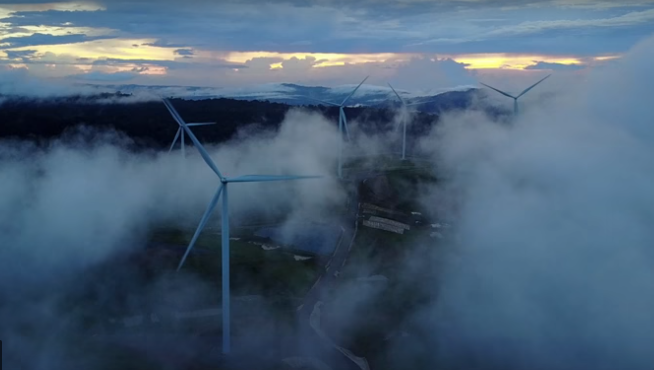
Governments must make decisions “as of today” to drive the world towards clean energy in a bid to cut carbon emissions and improve air quality, the International Energy Agency has said.
The latest World Energy Outlook from the IEA reveals that more than 70% of global energy investments will be government-driven, so it is up to officials to craft the right policies and incentives to clean up energy supplies.
Under current and planned policies announced by governments, carbon emissions continue to rise, while energy demand is set to grow by more than 25% by 2040 – which will need two trillion US dollars (£1.5trn) a year in investments.
The share of renewables in generating power will rise to more than 40% by 2040, the IEA suggests, up from 25% today – although coal will remain the largest source of electricity, followed by gas.
Electricity systems will need to be more flexible to cope with rising renewables, with more investment in grids, and development of smart meters and battery storage.
Switching more heating, industrial processes and transport to electricity – such as electric cars – would lead to a peak in oil demand by 2030, and reduce localised air pollution in cities.
But it would make a “negligible” difference to carbon emissions without stronger efforts to increase the share of renewables and low-carbon sources of power, the IEA warned.
Under a “sustainable development scenario” – which will meet a global goal on climate change, air quality and access to energy – carbon emissions would peak around 2020 and then decline steeply.
But the IEA warns most emissions linked to energy infrastructure are already essentially “locked-in”, because they are already built technology – such as coal-fired power plants recently constructed in Asia with decades left to run.
Dr Fatih Birol, executive director of the IEA, said: “We have reviewed all current and under-construction energy infrastructure around the world – such as power plants, refineries, cars and trucks, industrial boilers, and home heaters – and find they will account for some 95% of all emissions permitted under international climate targets in coming decades.
“This means that if the world is serious about meeting its climate targets then, as of today, there needs to be a systematic preference for investment in sustainable energy technologies.
“But we also need to be much smarter about the way that we use our existing energy system.”
He said using technology to capture and store carbon underground, developing hydrogen power, improving energy efficiency and retiring existing plants early could “create some room for manoeuvre”.
But it would need an “unprecedented global political and economic effort”, he said.
He added the world’s energy destiny lies with government decisions.
“Crafting the right policies and proper incentives will be critical to meeting our common goals of securing energy supplies, reducing carbon emissions, improving air quality in urban centres and expanding basic access to energy in Africa and elsewhere.”
Europe’s wind industry body WindEurope welcomed projections in the World Energy Outlook that the renewable technology would overtake coal, nuclear and gas to become the EU’s largest power source well before 2030.
But chief executive Giles Dickson said: “But whilst it’ll be good to be number one in electricity, electricity is only 24% of Europe’s energy.
“To decarbonise the whole energy system, we’re going have to start getting large amounts of wind and other renewables into heating, transport and industrial processes.
“It’s technically do-able and affordable. It just needs the right policies to drive investments in electric vehicles, heat pumps and electric boilers in district heating systems.”
Recommended for you
